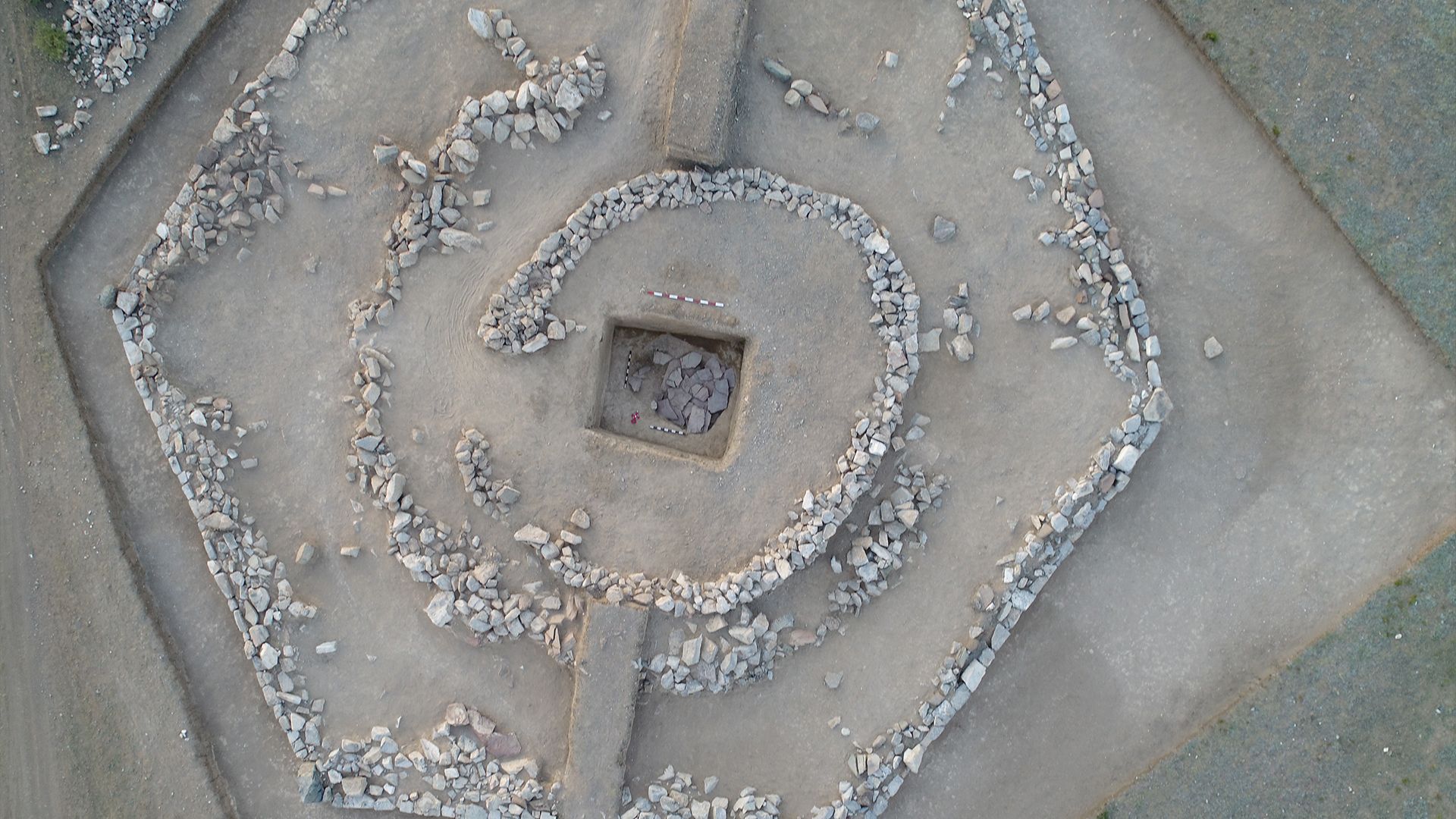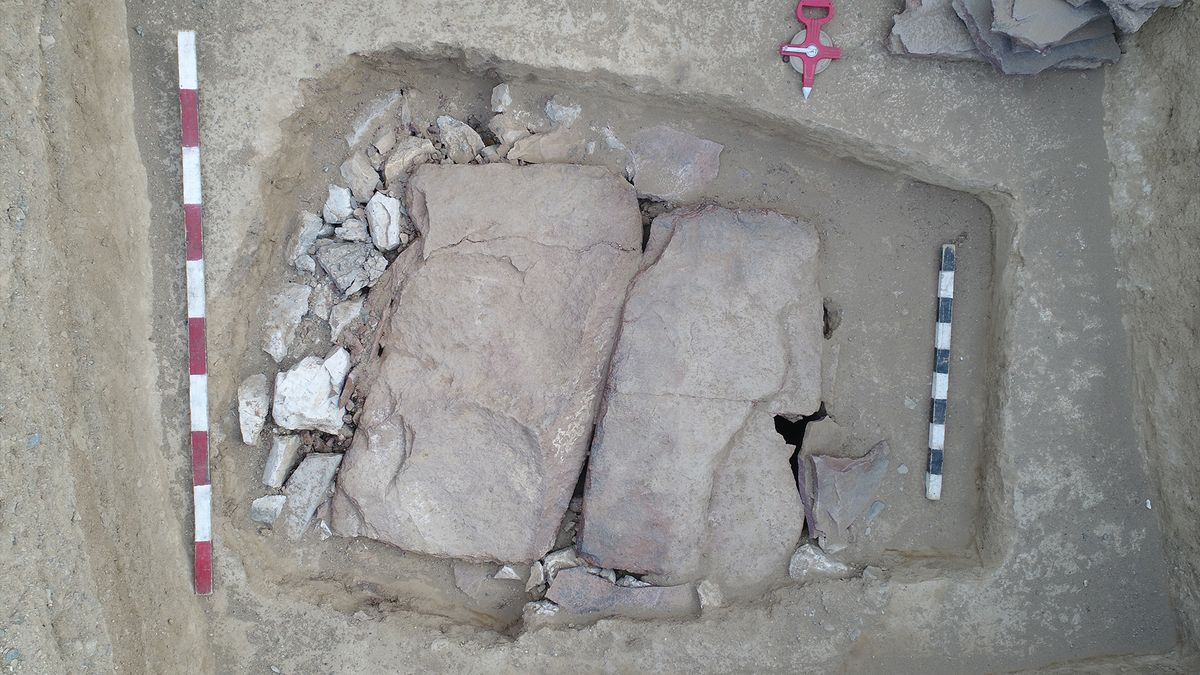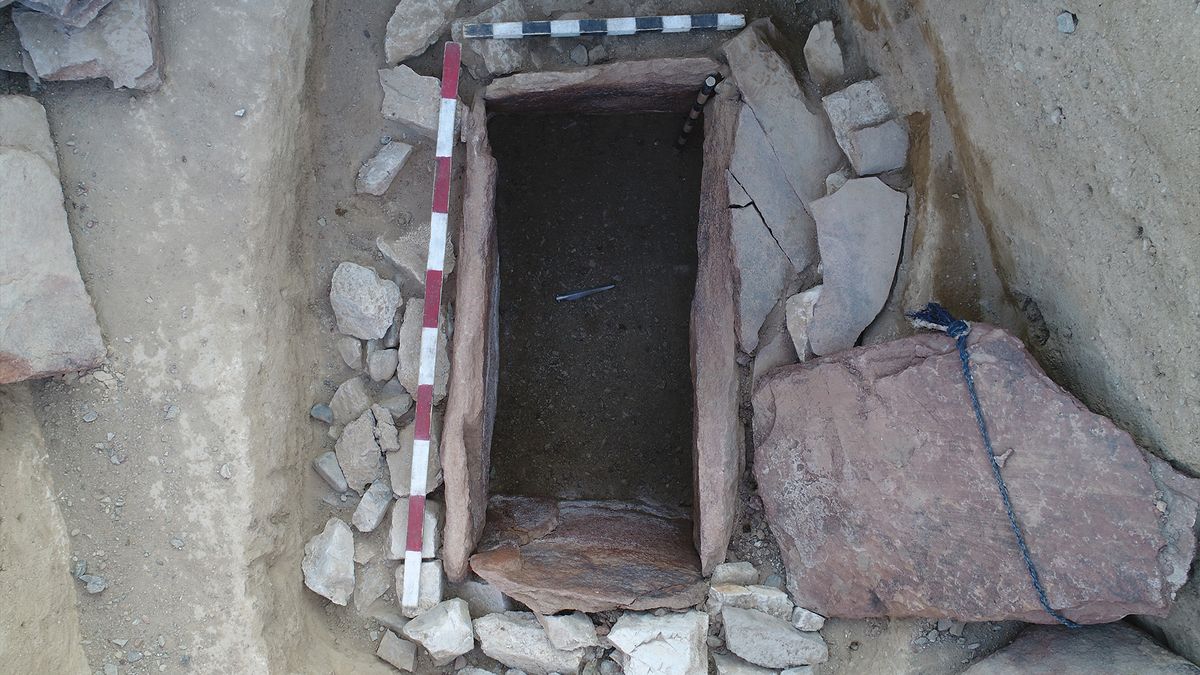Enigmatic Eurasian Pyramid Baffles Experts
Follow us on Google News (click on ☆)

Aerial view of the hexagonal pyramid in Kazakhstan. Note how the internal stone walls form a maze-like path leading to the burial site at its center.
Credit: Ulan Umitkaliyev
Led by Ulan Umitkaliyev, head of the Department of Archaeology and Ethnology at the Eurasian National University, this excavation has uncovered a structure that puzzles experts. While archaeologists refer to it as a "pyramid" or "stepped pyramid," its hexagonal architecture and labyrinthine internal walls set it apart from the pyramids of Egypt.
The site also sheds light on the lives of the region's ancient inhabitants. They were engaged in activities such as metallurgy and jewelry-making. Their economy might have been partially pastoral, centered on animal husbandry.

Close-up of the burial site at the center of the pyramid.
Credit: Ulan Umitkaliyev
The structure is adorned with petroglyphs depicting various animals, including camels and numerous horses. A horse cult appears to have existed in the region at that time, supported by the discovery of horse remains near the pyramid.
Radiocarbon analyses indicate that the structure was built in the 19th century BCE. Ulan Umitkaliyev reports that similar monuments exist in Kazakhstan, especially in the country's central region.

The burial surrounded by stones at the center of the pyramid.
Credit: Ulan Umitkaliyev
Karen Rubinson, a research associate at the Institute for the Study of the Ancient World at New York University, emphasizes that additional data is needed to scientifically assess this discovery. She advocates for the publication of scientific records and photographs of the artifacts and petroglyphs.